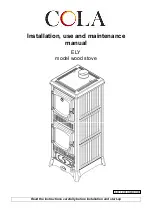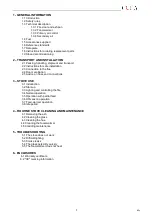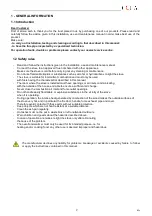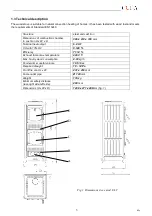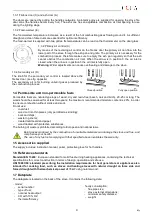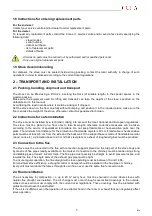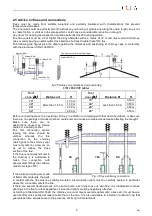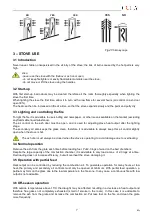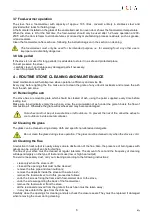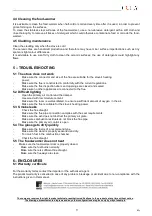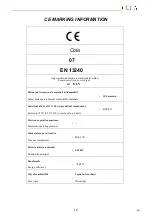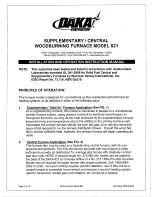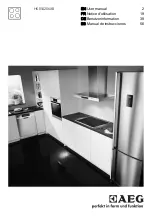
6
Ely
Roof
slope
(α)
(α)
(α)
(α)
Distance A
H
15°
1.00 m
30°
1.30 m
45°
2.00 m
60°
More than 1.85 m
2.60 m
2.5 Advice on flues and connections
Flues must be made from suitable materials and perfectly insulated, with characteristics that prevent
temperature decreases.
The inner walls must be perfectly smooth without any narrowing or protrusions along the entire length, so as not
to create friction or vortices in the smoke which could cause a considerable reduction in draught.
Any doors for cleaning and inspection must be perfectly closed during operation.
The flue outlets must be 0.5 m higher than any obstacles within a radius of 10 m and must end with chimney
caps or cowls having a useful outlet cross section of at least double that of the flue.
The following two figures give the data regarding the distances and positioning of chimney caps in conformity
with the provisions of UNI 10683/98.
Obstacle
Less than 5 m
A
t
le
a
s
t
0
.5
m
At least 0.5 m
Approx. 0.5m
At least 0.5 m
The chimney outlet must be at least
0.5 m higher than any obstacle within
a radius of 10 m.
fig.2 Chimney cap distances and positioning
UNI 10683/98 tables
Before connecting stove to an existing chimney, in addition to complying with that described above, make sure
there are no openings or cracks where air could enter and cause a temperature decrease affecting the draught.
Make
sure
there
are
no
obstructions caused by foreign
bodies or a buildup of soot.
The first connection section
leaving the stove should be
vertical,
whereas
the
flue
connection
to
the
chimney
(which goes to the chimney cap)
must only enter by a few cm, so
as not to reduce the cross
section of the flue.
If the flue is not perpendicular to
the chimney it is advisable to
make
the
connection
with
special steel fittings that allow a
maximum slope of 45°.
If the walls and ceiling are made
of flammable materials, the parts
in contact with the flue must be suitably insulated. All connection joints must be carefully sealed, in particular
where the connection enters the flue.
If there are several heating stoves in the same home, each must have its own flue. It is inadvisable to make
openings in the flue for other appliances, since the draught could be negatively affected.
According to Standard UNI 7429, the chimney cap must meet several requirements; above all, it must have a
useful outlet cross section at least double that of the flue. It is also advisable to install an "antiwind" cap that
guarantees fume exhaust even in the presence of strong horizontal winds.
Roof
slope
(α)
(α)
(α)
(α)
Distance B
H
15°
0.50 m
30°
0.50 m
45°
0.50 m
60°
Less than 1.85 m
0.50 m
NO
NO
YES
MAX 45°
Fig. 3 Stove-chimney connection

